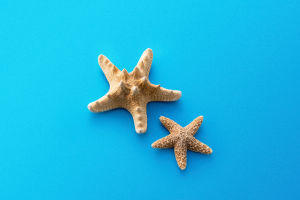A tree's age can be revealed by counting its rings, but how do we age a fish?
It's a fascinating question that we often ponder in the world of fisheries and conservation.
Just like trees, fish lay down rings throughout their lives, but instead of tree rings, we use the growth marks on their scales to determine their age. It's a simple yet powerful method that helps us understand the biology, behavior, and life history of fish.
The Science Behind Fish Ageing
At the National Fisheries Laboratory (NFL) in Brampton, we use scale readings to uncover the secrets of a fish's past. As fish grow, their scales develop rings, much like the annual rings of a tree. These rings, called circuli, appear as dark and light bands on the scales. By studying these bands under a microscope, we can determine how old a fish is, much like how tree rings reveal a tree's age.
The Impact of Scale Loss on Ageing
As fish age, they naturally lose scales, which can make it more difficult to accurately determine their age. However, most scales stay intact throughout their lives, providing us with valuable data. While fish size doesn't always correlate with age, it's the rings on the scales that truly tell the story. For example, we've found 3lb perch aged just 3 years, and 6lb chub that were between 11 and 17 years old.
How We Read the Rings
Fish grow at different rates depending on the time of year. In winter, the fish's growth slows, and the circuli appear closer together. In summer, the fish grows more rapidly, and the rings are spaced further apart. By counting the narrow winter rings, we can pinpoint the age of a fish. Through this analysis, we can even trace key life events like stocking, spawning, and feeding patterns.
The Role of Scale Ageing in Fisheries
Scale ageing is an invaluable tool for fishery managers. It helps us assess the health and performance of fish populations. By understanding the growth rates, we can determine if a fishery is thriving or struggling. Healthy, well-fed fish grow faster, while stunted growth may indicate limited food availability or other pressures on the ecosystem.
How Fish Ageing Helps Fisheries Management
Fishery management is critical to maintaining healthy fish populations. However, making informed decisions requires accurate data on the condition of the fish and the environment. At the NFL, we provide age assessments for fish populations across the country. This helps anglers, fisheries, and wildlife groups understand the health of their local waters.
In some cases, we even receive scales from record-breaking fish. For example, a 26lb 6oz brown trout from Eyebrook Reservoir was over 11 years old, while a 100+ lb carp from France was just 16 years old. These insights help guide better management practices, ensuring that fish populations thrive for years to come.
Contributing to Better Fisheries
We are always looking for ways to help improve the understanding of fish populations. Our fish ageing kits are available for fisheries and angling clubs to help them assess the performance of their waters. With these kits, anglers can collect scale samples, and we'll age them and provide a detailed report. This valuable information helps make informed decisions about fishery management.
If you're curious about how to age a fish or want to improve the health of your local fishery, we're here to help. Reach out to the National Customer Contact Centre for more information on fish ageing services and management advice!


